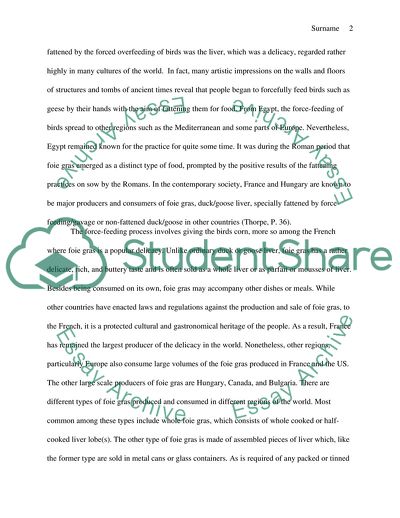Cite this document
(The Anthropology of Foie Gras Term Paper Example | Topics and Well Written Essays - 2500 words, n.d.)
The Anthropology of Foie Gras Term Paper Example | Topics and Well Written Essays - 2500 words. https://studentshare.org/family-consumer-science/1761791-food
The Anthropology of Foie Gras Term Paper Example | Topics and Well Written Essays - 2500 words. https://studentshare.org/family-consumer-science/1761791-food
(The Anthropology of Foie Gras Term Paper Example | Topics and Well Written Essays - 2500 Words)
The Anthropology of Foie Gras Term Paper Example | Topics and Well Written Essays - 2500 Words. https://studentshare.org/family-consumer-science/1761791-food.
The Anthropology of Foie Gras Term Paper Example | Topics and Well Written Essays - 2500 Words. https://studentshare.org/family-consumer-science/1761791-food.
“The Anthropology of Foie Gras Term Paper Example | Topics and Well Written Essays - 2500 Words”. https://studentshare.org/family-consumer-science/1761791-food.


